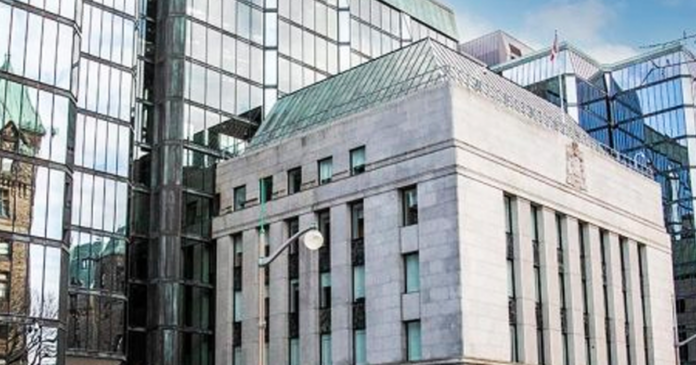The Bank of Canada announced that it would hold its overnight rate at 5% on Wednesday.
The announcement marks the fourth consecutive decision to keep the rate steady at 5% since July 2023.
Governor Tiff Macklem told reporters that discussions at the Bank of Canada have shifted from whether its key policy rate is high enough to how long it needs to maintain it at 5%.
“What came through in the deliberations is that Governing Council’s discussion about future policy is shifting from whether monetary policy is restrictive enough to how long to maintain the current restrictive stance,” said Macklem.
The central bank said it anticipates economic growth will continue to slow, helping inflation to gradually ease across a number of economies. Consumer spending and business investment are also expected to continue to slow this year.
“In the euro area, the economy looks to be in a mild contraction. In China, low consumer confidence and policy uncertainty will likely restrain activity. Meanwhile, oil prices are about $10 per barrel lower than was assumed in the October Monetary Policy Report (MPR). Financial conditions have eased, largely reversing the tightening that occurred last autumn,” reads a statement from the Bank of Canada.
“The Bank now forecasts global GDP growth of 2½% in 2024 and 2¾% in 2025, following 2023’s 3% pace. With softer growth this year, inflation rates in most advanced economies are expected to come down slowly, reaching central bank targets in 2025.”
Some economists believe a rate cut will happen in April but the bulk of Bay Street economists don’t think the first cut will happen until closer to the middle of the year, around June or July.
Borrowing costs, which are at the highest level in two decades, appear to remain restrictive enough to get inflation back under control.
However, inflation and wage growth are moving at a pace faster than the bank would like to see.
Core inflation rose in December and has remained hovering around the 3.5%-4% range, which is far higher than the bank’s target of 2%.
“Labour market conditions have eased, with job vacancies returning to near pre-pandemic levels and new jobs being created at a slower rate than population growth. However, wages are still rising around 4% to 5%,” reads the statement.
“Overall, the Bank forecasts GDP growth of 0.8% in 2024 and 2.4% in 2025, roughly unchanged from its October projection.”
Consumer Price Inflation ended at 3.4% last year, with shelter and fuel costs being the biggest contributor to keeping inflation above the 2% target.
The Bank of Canada expects that inflation will stay around 3% for the first six months of 2024 before gradually going back down to 2% in 2025.





















